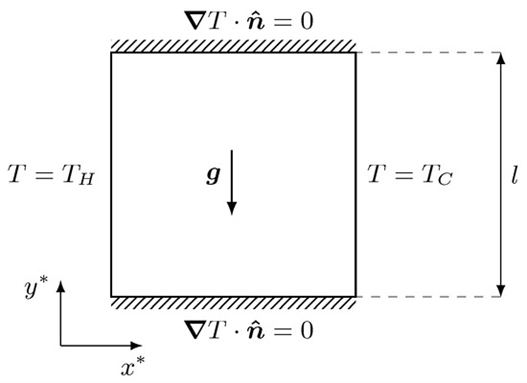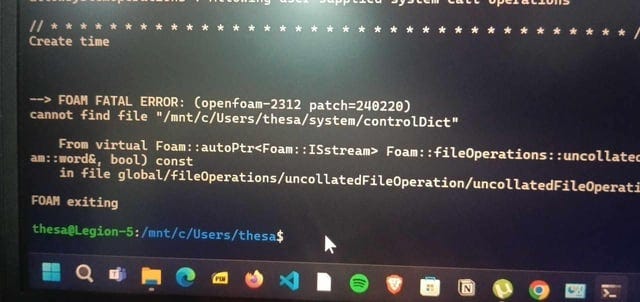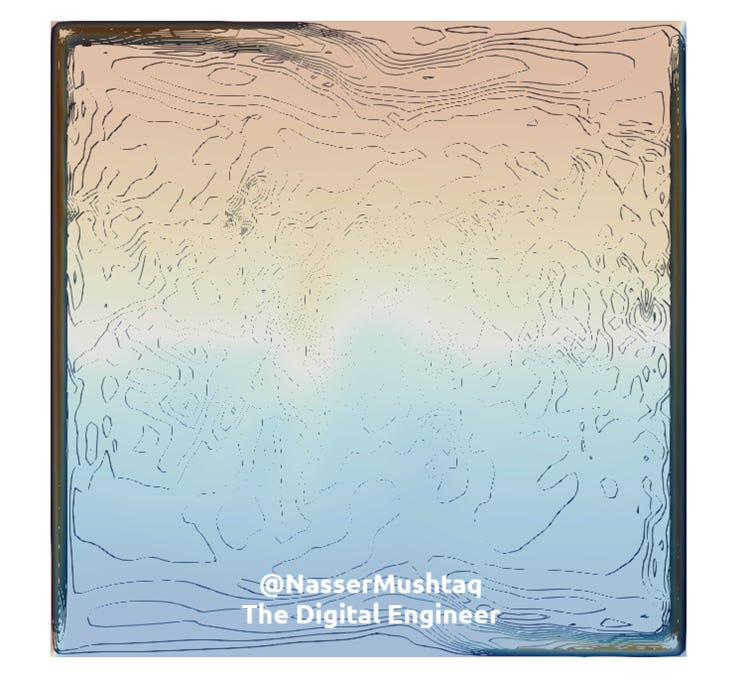#25: Troubleshooting OpenFOAM errors like a wizard
My personal, step-by-step trouble-shooting strategy inside!
OpenFOAM errors…
The Engineers’ and Researchers’ enemy to simulation progress and sanity…!
Afterall you want to do is get those wonderful, physically-realistic / validated results, like this:
Instead you’re presented with errors like these:
And it doesn’t help with the fact that there is no GUI provided with OpenFOAM!
But here’s what most users don’t understand:
The Solver wants to solve your case.
It wants to.
It was created to do so.
“But Nasser, what do you mean it wants to and how does that help me??!”
I hear you.
Well, read closely…
The Solver is literally a block of code that is developed to numerically reach a stable solution through an iterative process or loop:
initial values are sourced as estimations for subsequent calculations (including those from your ‘0’ folder!)
the equations are discretised (across the given mesh)
the momentum, continuity and energy equations are solved one at a time
the boundary conditions guide the flow (get these right!)
the calculations aim to keep the changes small between each iteration (residuals / convergence)
Like tuning an instrument, the Solver plays each note, adjusts the tension and listens for harmony. Numerical simulation really is beautiful.
But errors during setup or downstream hinders progress and slows down your ability to innovate (less data, feedback, optimisation opportunities etc.).
Preparation is key: get to know the different types of errors that can happen in OpenFOAM
If you really want to have a deeper understanding and setup simulations with intent, proactively defending against the possibility of errors, you really need to understand the sources of them.
And there are many types…
Compilation errors (when you first try to run the solver based on your setup):
Syntax checking - have you missed a semi-colon or mis-spelt a boundary condition type?
Missing dependencies – did you forget to link to a required library or forget to include a header file?
Incorrect file structure – OpenFOAM expects files in specific folders (
0,constant,system). If something’s in the wrong place, compilation or execution fails.
Run-time errors (after compilation checks, running the solver):
Missing boundary conditions - if you didn’t define a required field or forgot to set one of the patches.
Numerical instability - values exploding to NaN or infinity, often due to bad mesh quality, wrong solver settings, or poorly chosen initial conditions.
Divergence errors - this is when the solver can’t find a stable solution. The simulation “blows up” after a few iterations.
Floating point exceptions - division by zero, negative square roots or other numerical crimes!
Post-processing errors (ParaView, resulting data etc.):
Can't read case - usually missing or corrupted output.
Missing timesteps or incorrect format.
Vector fields not showing due to wrong type (e.g. defined as scalar).
Simulation finishes without crashing but the result is non-physical:
Negative pressure where it shouldn’t be.
Flow patterns that defy physics.
Temperatures below zero Kelvin.
I agree, there’s plenty here and that means lots can go wrong.
Many people, especially non-coders / developers find these types cryptic and hard to decipher.
With experience and a resilient mindset you can get past it.
The trick is to begin by appreciating the types of errors that can occur.
Next….
Understanding the physics of the problem will let you identify and resolve the non-physical artifacts
In my book, this is a crucial step.
You see, physical phenomena is the real-world experience of the problem we’re trying to replicate in our digital, virtual world.
If you can understand it, create a model of it and then prepare to simulate it, you’ve pro-actively avoided non-physical errors.
Remember, physics Solvers are programmed to understand real physical quantities.
So always begin your pro-active approach against errors by setting up correctly, in alignment to a physical counter-part like this:

You gather information and details like:
Materials
Temperatures
Environmental influences
Chemical interactions
Anything that can likely affect the flow in principle.
You might be able to get away with copying tutorials or learning over a (very long) period of time through experience, but it makes for a very frustrating journey!
Think of OpenFOAM or any other CFD simulation tool as a kind of controlled digital lab.
Whilst we’re in 2025 and OpenFOAM has become considerably more stable in recent years, it still relies heavily on you as the user to feed it good data to begin with.
Scratch its back and it will scratch yours.
Now I will go on to mention the most impactful and sanity-preserving thing you could do as an Engineer or Researcher using OpenFOAM…
Develop a methodical approach to simulation (or take mine)…
You need to prepare ahead for errors so you can whack them when they appear!
One thing is for sure, it can quickly become a frustrating, off-putting experience if you wonder around in the dark.
As well as OpenFOAM, I’ve used many commercial, GUI-based software and CAD-integrated tools to simulate a variety of cases.
Let me tell you, all need careful setup - it’s less about the tool and more about how you approach it!
OpenFOAM definitely requires more of you in terms of persistence, but once you build the confidence of using it and muscle over time, you’ll win more often.
And a method is a systematic approach that has you following a playbook…
It gives you confidence in yourself, even when things look grim (like a persistent error in OpenFOAM).
So let me ask you…
Do want to consistently create validated CFD simulation results like this below?

To help you setup cases with confidence, trouble-shoot pro-actively and solve cases with OpenFOAM quicker, I’m sharing my personal, step-by-step method with you, using this 2D pure convection case as an example (plus case files are available as a download).
Here we go…👇
Become a paid member to get access to my detailed, specific practical strategy below. You’ll also get:
✔️ Access to this and all exclusive future content!
✔️ My OpenFOAM Boundary Conditions Cheat Pack
✔️ Exclusive member-only chat access for 1-to-1 help.
✔️ To directly support an Engineer that’s determined to bring you the best and clear information on learning CFD simulation and digital engineering on the Internet!




